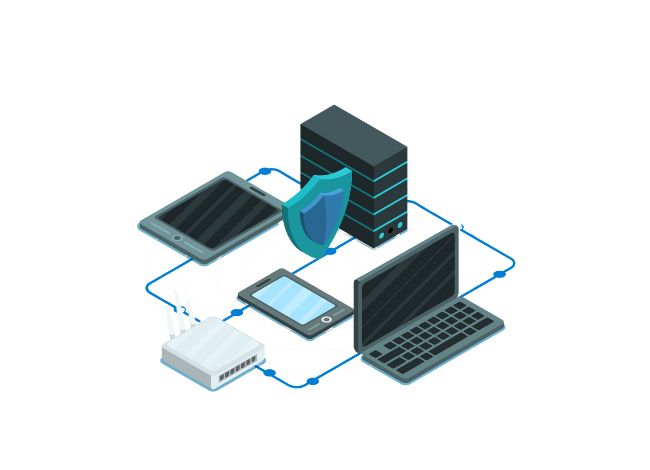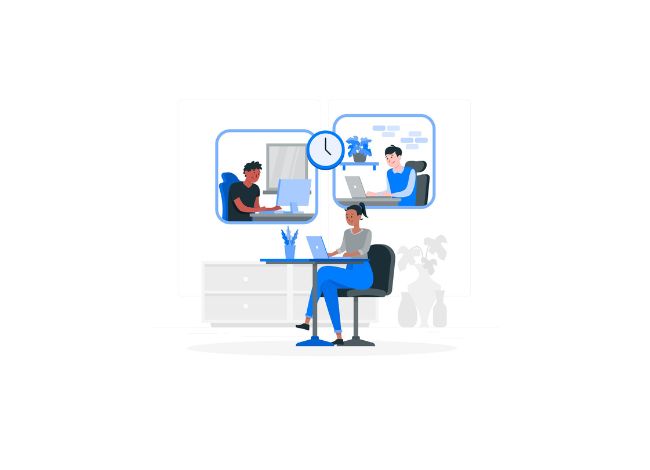What Is Network Security?
Network security refers to the strategies, technologies, and processes used to protect the integrity, confidentiality, and availability of computer networks and data. This includes protection against unauthorized access, misuse, and disruption.
Whether you’re running a small business or managing enterprise infrastructure, robust network security ensures:
Protected data transmission
Controlled user access
Secure endpoints and devices
Threat detection and prevention
Network security includes everything from firewalls and VPNs to monitoring systems and antivirus software.
Latest Cyber Threats Impacting Network Security
As technology evolves, so do cybercriminal tactics. The modern threat landscape includes a variety of attack vectors targeting both infrastructure and end-users.
Common threats include:
- Ransomware Attacks: Malicious software that encrypts files and demands ransom for decryption.
- Phishing: Deceptive messages trick users into revealing credentials or downloading malware.
- Zero-Day Exploits: Attacks that exploit unknown or unpatched vulnerabilities in software.
- DDoS Attacks: Distributed Denial of Service floods the network with traffic, making services unavailable.
- Man-in-the-Middle Attacks: Attackers intercept and alter communications between two parties.
Understanding these threats is crucial to choosing the right defenses and implementing effective countermeasures.
Essential Tools for Network Security
To combat advanced threats, businesses need an arsenal of reliable security tools designed to defend networks at every layer.
Key network security tools include:
| Category | Tools & Examples |
|---|---|
|
|
|
|
|
|
|
|
|
|
|
|
These tools help monitor, detect, and respond to threats in real time, securing both internal and external traffic.
Securing Cloud and Wireless Networks
Cloud adoption and wireless connectivity have become integral to modern IT environments, but they also expand the attack surface.
Cloud Security Essentials:
Data encryption at rest and in transit
Strong identity and access management (IAM) policies
Secure APIs and third-party integrations
Cloud firewall configurations
Logging and monitoring of cloud activity
Wireless Security Practices:
Enforce WPA3 encryption for all wireless access points
Disable SSID broadcasting for private networks
Use MAC address filtering
Regularly update firmware on wireless routers and devices
Deploy wireless intrusion prevention systems (WIPS)
Proper configuration of both cloud and wireless environments ensures secure connectivity across all devices and users.
Bornsec’s Security Operations Center (SOC) offers real-time security monitoring, threat intelligence, and expert response.
Endpoint and Device Protection
Endpoints such as desktops, laptops, mobile devices, and IoT sensors are prime targets for attackers. Each endpoint must be treated as a security perimeter.
Key endpoint security strategies:
Install up-to-date antivirus and anti-malware tools
Apply regular OS and software patches
Enable device encryption
Implement mobile device management (MDM) systems
Limit user access to sensitive applications
Comprehensive endpoint protection plays a critical role in preventing breaches and ensuring business continuity.
Real-Time Network Monitoring & Threat Detection
Visibility into network activity is essential for identifying suspicious behavior before it escalates into an incident.
Effective monitoring includes:
Use of Security Information and Event Management (SIEM) platforms
Behavioral analytics to spot anomalies
Packet capture tools for in-depth analysis
Automated alerting for known attack signatures
Integration with intrusion detection and prevention systems
Modern monitoring systems provide dashboards that centralize logs, metrics, and alerts—enabling faster incident response.
Best Practices for a Secure Network
Strong network security doesn’t depend on tools alone—it also requires a strategic approach and consistent governance.
Proven best practices:
Follow the principle of least privilege for user access
Segment networks to limit the spread of breaches
Regularly audit security configurations and network traffic
Implement Multi-Factor Authentication (MFA)
Develop an incident response plan for potential breaches
Maintain encrypted backups of critical data
Combining policy with technology reduces your overall risk and ensures that even if a breach occurs, damage can be minimized.
Personal Cyber Hygiene: Staying Safe Online
Network security isn’t just for enterprises. Individuals also need to take precautions to protect their personal data.
Tips for personal network safety:
Use strong, unique passwords and a password manager
Keep software and mobile apps up to date
Avoid public Wi-Fi without a VPN
Use secure email services with spam and phishing filters
Enable firewalls on personal devices
Install trusted data privacy and antivirus applications
With more devices connected than ever before, proactive protection at the individual level is crucial.
Enterprise Network Security: Why It Matters
Businesses of all sizes are at risk of cyberattacks, especially those handling sensitive customer or financial data. A robust network security framework not only protects against data loss but also preserves trust, reputation, and operational uptime.
Benefits include:
Protection from ransomware, data breaches, and insider threats
Reduced downtime and operational disruption
Improved customer confidence
Competitive advantage in secure digital services
Enterprise-level security frameworks are no longer optional—they’re essential for survival in a digital-first economy.
How Bornsec Helps Secure Your Network
Bornsec delivers comprehensive network protection by offering:
Advanced firewalls and SIEM integration
Endpoint protection across devices and platforms
24/7 real-time monitoring through our Security Operations Center (SOC)
Threat intelligence to detect and neutralize evolving attacks
Custom security architecture for cloud, on-premises, and hybrid environments
Learn more about Bornsec’s Cybersecurity Services or get started with a free consultation today.
Final Thoughts
Network security is no longer just an IT responsibility—it’s a business imperative. With cyberattacks growing in volume and sophistication, organizations must adopt a layered security approach that includes reliable tools, vigilant monitoring, and strong governance.
From securing your endpoints and wireless devices to implementing powerful monitoring solutions, network security is a continuous journey. Proactive defense, not reactive fixes, will be the key to staying resilient in a digital-first world.




